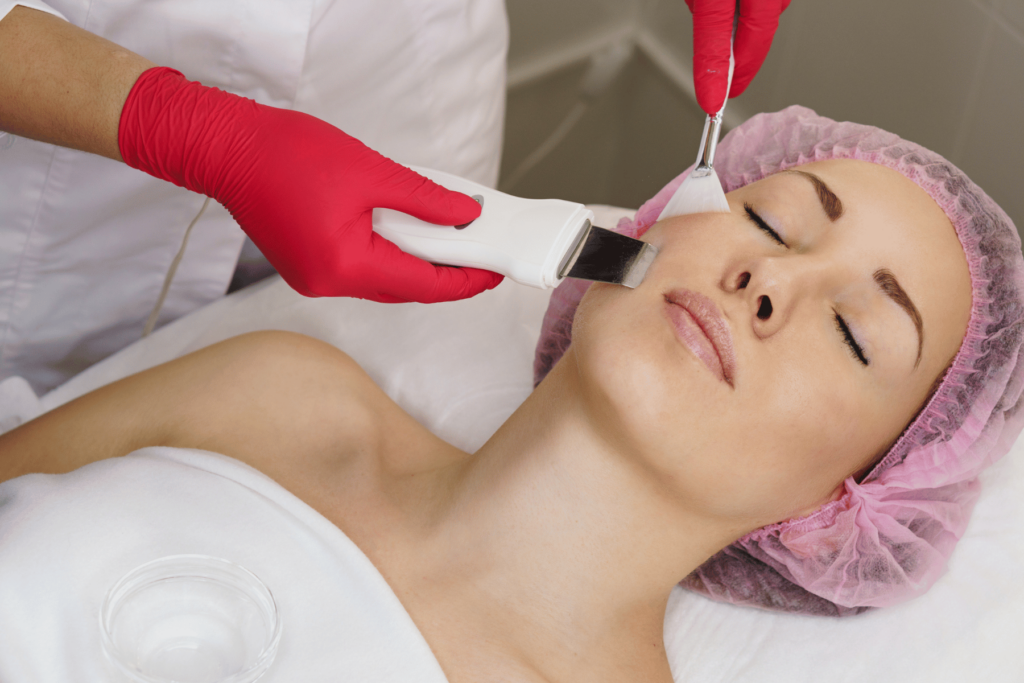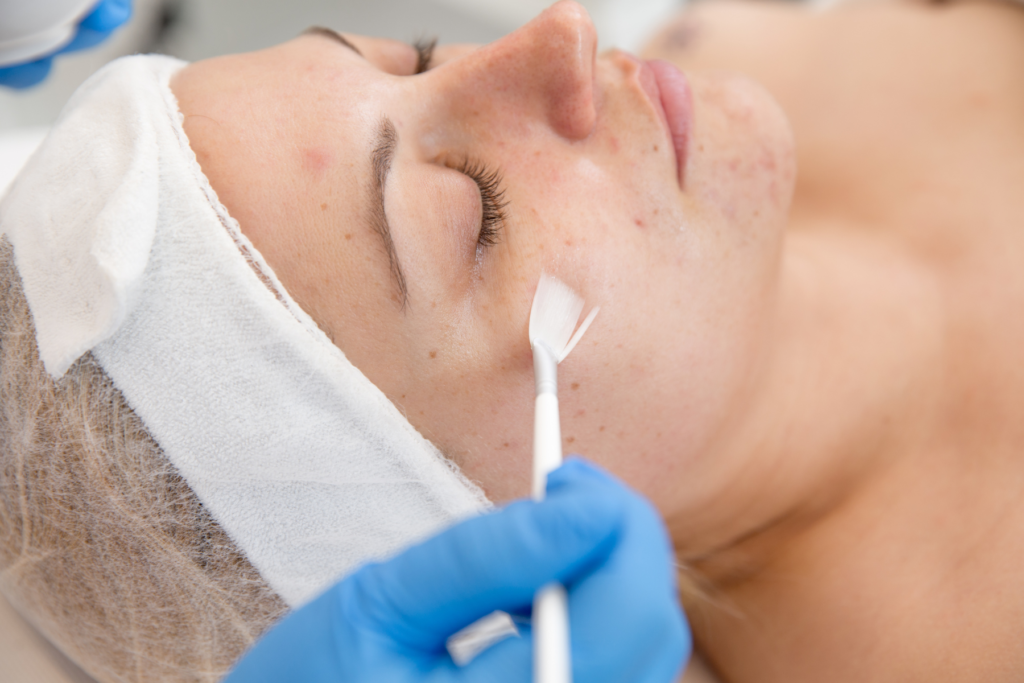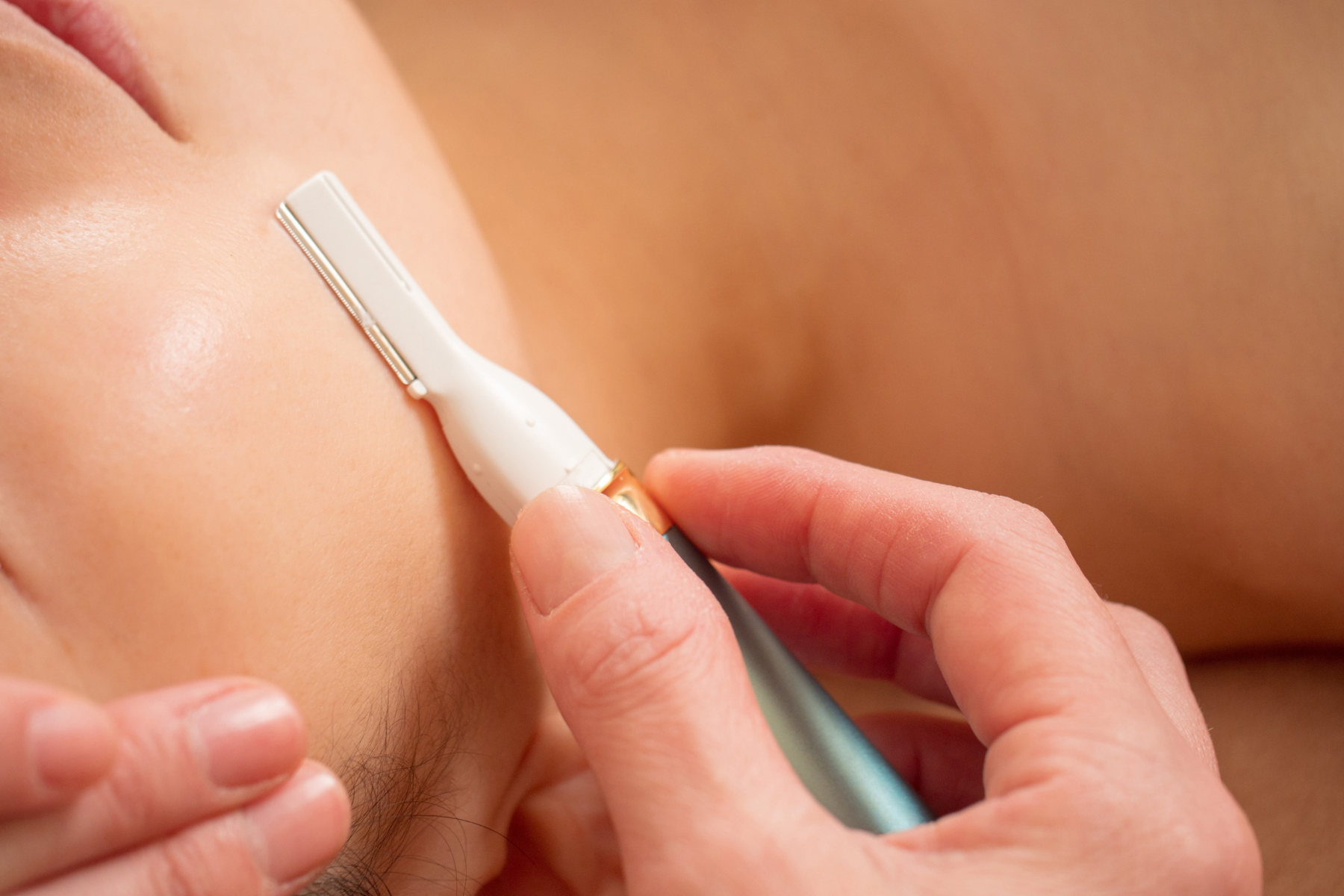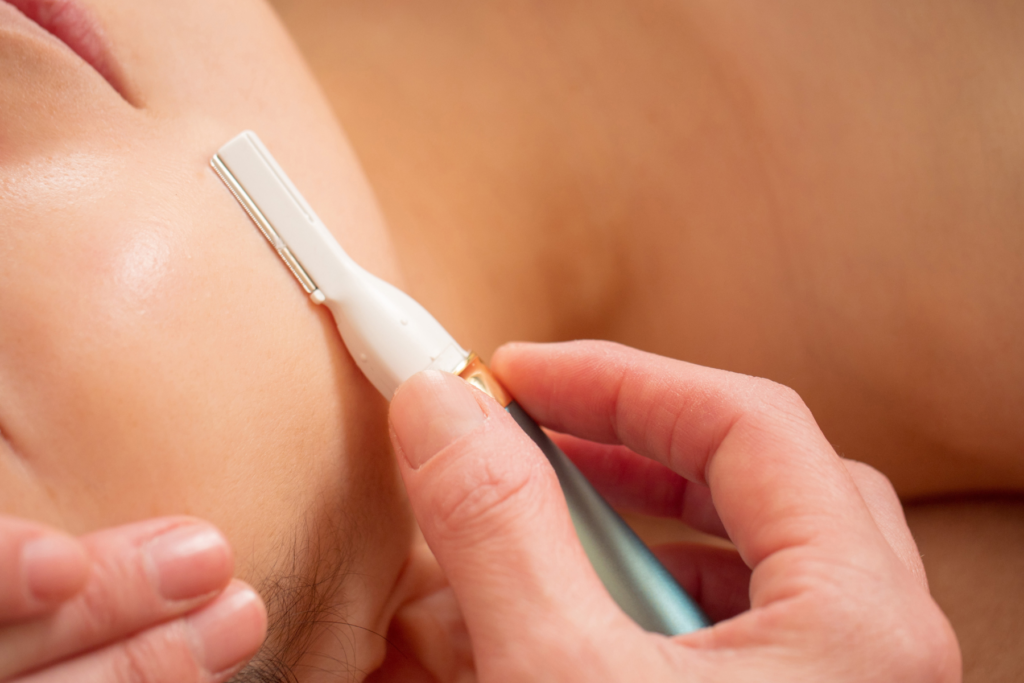When it comes to skincare treatments, there are a variety of options available to help you achieve a radiant, healthy complexion.
Two popular treatments that are often compared are dermaplaning and chemical peels. Both procedures are designed to exfoliate the skin, remove dead skin cells, and improve the appearance of fine lines and wrinkles.
However, they differ in their methods of exfoliation and the results they produce.
What is Dermaplaning?
Dermaplaning is a non-invasive, manual exfoliation treatment that involves using a surgical scalpel to remove the top layer of dead skin cells and fine facial hair or from the surface of the skin. These fine hairs are also known as peach fuzz.
A licensed esthetician typically does this procedure. It is painless and safe for most skin types.
Dermaplaning can help to improve the texture and tone of the skin, reduce the appearance of fine lines and wrinkles, and allow for better penetration of skincare products.
I recently purchased my own dermaplanning tools on Amazon for less than $6, but haven’t used them yet. I think I might just let the professionals do that job.
What is a Chemical Peel?
On the other hand, chemical peels are a type of exfoliating treatment that involves the use of various chemical solutions to remove dead skin cells from the surface of the skin.
Chemical peels can be mild, medium, or deep, depending on the strength of the solution used and the desired results, like removing age spots, evening your skin tone, or increasing collagen production.
Light peels and medium peels are often done by a licensed esthetician, while deep peels may require a dermatologist’s supervision.
The different types of chemical peels can help to reduce the appearance of fine lines and wrinkles, improve skin texture and tone, and reduce the appearance of sun damage and acne scars.
The last time I got a chemical peel, it was very warm on my skin, which means it was too strong for me. Plus, the peeling for a few days after was annoying to me, but proof it was working.
For more on how long a chemical peel lasts, click here.

Dermaplaning vs Chemical Peels: What Should You Get?
When comparing dermaplaning vs chemical peel, the main difference is the method of exfoliation.
Dermaplaning is a physical exfoliation of the top layer of the skin while chemical peels are a chemical exfoliation. Physical exfoliation is gentler on the skin and may be a better option for those with sensitive skin. Plus, you see immediate results.
Chemical exfoliation can be more effective in removing deep-seated impurities, but it may cause more redness and irritation.
Another difference between the two treatments is the downtime required.
Dermaplaning has no downtime, and you can resume your regular skincare routine immediately after the procedure.
Chemical peels, however, can require a few days of downtime, depending on the strength of the peel. You may experience redness, peeling, and flaking after a chemical peel, and it’s very important to avoid sun exposure during this time.
So, what’s best for you?
Both dermaplaning and chemical peels can be effective treatments for achieving a brighter, smoother, and more youthful-looking complexion. The choice between the two will depend on your skin type, concerns, and desired results.
A great solution is to start with one and see how you like it!
Can you Combine Dermaplaning AND a Chemical Peel?
In general, it is not recommended to combine dermaplaning and a chemical peel in the same treatment session.
Both procedures are exfoliating treatments that can cause some level of irritation and sensitivity to the skin. Combining them can increase the risk of irritation and damage to the skin, which can lead to unwanted side effects such as redness, peeling, and even scarring.
That being said, it is possible to combine these treatments if done by a licensed and experienced skincare expert who knows how to properly perform both treatments without causing harm to the skin.
In some cases, a light chemical solution can be applied immediately after dermaplaning to further enhance the results of the exfoliation and improve the skin’s texture and tone.
However, this should only be done under the supervision of a licensed skincare professional who can assess your skin’s condition and determine if this is a safe option for you.
If you are interested in combining dermaplaning and a chemical peel, it’s important to consult with a licensed skincare professional first.
They can provide you with personalized advice based on your skin condition and concerns, and help you create a customized treatment plan that is safe and effective for your skin.
What Comes Off Your Face?
These popular skincare procedures offer various benefits, such as exfoliation, skin rejuvenation, and addressing specific skin concerns, but what exactly comes off your face during these treatments?
Dermaplaning
1.) Vellus Hair
One of the noticeable outcomes of dermaplaning is the removal of vellus hair. These fine, translucent hairs are found on various parts of our faces, often accumulating dirt and oil.
While the removal of vellus hair may not directly affect its growth or texture, it can provide a smoother canvas for makeup application and enhance the overall appearance of the skin.
2.) Dead Skin Cells
As the surgical blade glides across the skin, it effectively sloughs away layers of dead skin cells that accumulate on the surface. These dead cells can make the skin appear dull, uneven, and contribute to clogged pores.
By removing this outer layer, dermaplaning stimulates the skin’s natural rejuvenation process, promoting a fresher, more radiant complexion.

Chemical Peels
1.) Dead Skin Cells
Similar to dermaplaning, chemical peels are designed to remove layers of dead skin cells. The chemical solution used in the peel helps dissolve the bonds that hold these dead cells together, leading to their exfoliation.
As a result, the peel reveals a fresher, smoother, and more youthful layer of skin underneath.
2.) Impurities and Congested Pores
Chemical peels are highly effective in targeting clogged pores, blackheads, and other impurities that may be trapped in the skin. The exfoliating action of the chemical solution helps to unclog pores, removing accumulated dirt, oil, and debris.
This can lead to a reduction in acne breakouts and an overall improvement in skin texture and clarity.
3.) Hyperpigmentation and Uneven Skin Tone
Certain types of chemical peels, such as those containing alpha-hydroxy acids (AHAs) or beta-hydroxy acids (BHAs), can effectively address hyperpigmentation, dark spots, and uneven skin tone.
The chemical solution penetrates the skin, targeting areas of discoloration and promoting a more even complexion as the damaged skin sheds.
By understanding what comes off your face during these treatments, you can appreciate the transformative effects they can have on your skin.

Skin Benefits of a Facial
Facials are skin care treatments that involve a combination of cleansing, exfoliating, moisturizing, and massage techniques to help improve the look and feel of the skin. People get facials for a variety of reasons, including improving the overall health and appearance of their skin, like:
1. Deep cleansing
Facials can help to remove dirt, oil, and other impurities from the skin that can clog pores and lead to breakouts.
2. Exfoliation
Facials can also help to exfoliate dead cells, revealing smoother, brighter, and more youthful-looking skin.
3. Anti-aging Benefits
Facials can help to reduce the appearance of fine lines and wrinkles, as well as improve the texture of your skin and its tone.
4. Relaxation
Facials are also a great way to relax and de-stress. The massage techniques used during the treatment can help to promote relaxation and reduce tension in the face and neck.
5. Customization
Facials can be customized to address specific skin concerns such as acne, hyperpigmentation, or dryness. A licensed esthetician can assess your skin and recommend a treatment plan that is tailored to your unique needs.
6. Professional guidance
Facials are often performed by licensed estheticians who can provide professional guidance on how to properly care for your skin at home. They can recommend skincare products and routines that are best suited for your skin type and concerns.

Different Facials
I went deep (no pun intended) on two specific skincare treatments – dermaplaning and chemical peels.
But there are many different types of facials available, each with its own unique benefits and uses. Here are some of the most common types of facials:
1. Classic Facial
This is a basic facial that includes cleansing, exfoliating, steaming, and a mask to help improve the overall health and appearance of the skin.
2. Acne Facial
This facial is designed to treat acne-prone skin by deep cleaning pores, exfoliating dead skin cells, and reducing inflammation.
3. Anti-Aging Facial
This facial is focused on reducing the signs of aging such as fine lines, wrinkles, and age spots. It may include treatments like microdermabrasion or chemical peels to improve skin texture and tone.
4. Brightening Facial
This facial uses ingredients like vitamin C and antioxidants to help brighten and even out skin tone, reduce hyperpigmentation, and promote a more youthful appearance.
5. Hydrating Facial
This facial is designed to replenish moisture to dry, dehydrated skin. It may include cosmetic treatments like a hydrating mask or serum to help restore the skin’s natural moisture barrier.
6. Oxygen Facial
This facial uses a machine to deliver oxygen and other nutrients to the skin, helping to improve circulation and promote a brighter, more radiant complexion.
7. Microcurrent Facial
This facial uses low-level electrical currents to stimulate facial muscles, helping to lift and tone the skin.
8. LED Facial
This facial uses light therapy to target specific skin concerns, such as acne or hyperpigmentation.
In addition to these types of facials, there are many other specialized facials available that cater to specific skin concerns or skin types. Here is a behind-the-scenes look of me getting a MOXI Laser facial at Sanctuary Medical Center in Boca Raton. (I highly recommend them for all your skincare needs.)
What Facial Should you Get?
Again, dermaplaning is a gentle and non-invasive treatment that can be done regularly to maintain healthy-looking skin. Chemical peels are more intensive treatments that can address specific skin concerns, but they may require more downtime and should be done by a licensed professional.
Ultimately, consulting with a skincare professional can help you determine the best treatment plan for your individual needs. I like trying both and going back and forth between the two.
If you want to see the comparison of a hydrafacial and microdermabrasion facial, click here.
After you get all the facial treatments taken care of and you’re ready to go out, here are my favorite foundations for melasma… hence the reason I need the dermaplaning treatment and chemical peel treatments!
For best results, you should get skin peels and a dermaplaning treatment once a month. (At least that’s what the skin care experts tell me!)
Let me know what you decide on social media. You can find me at @ChristinaAllDay.

